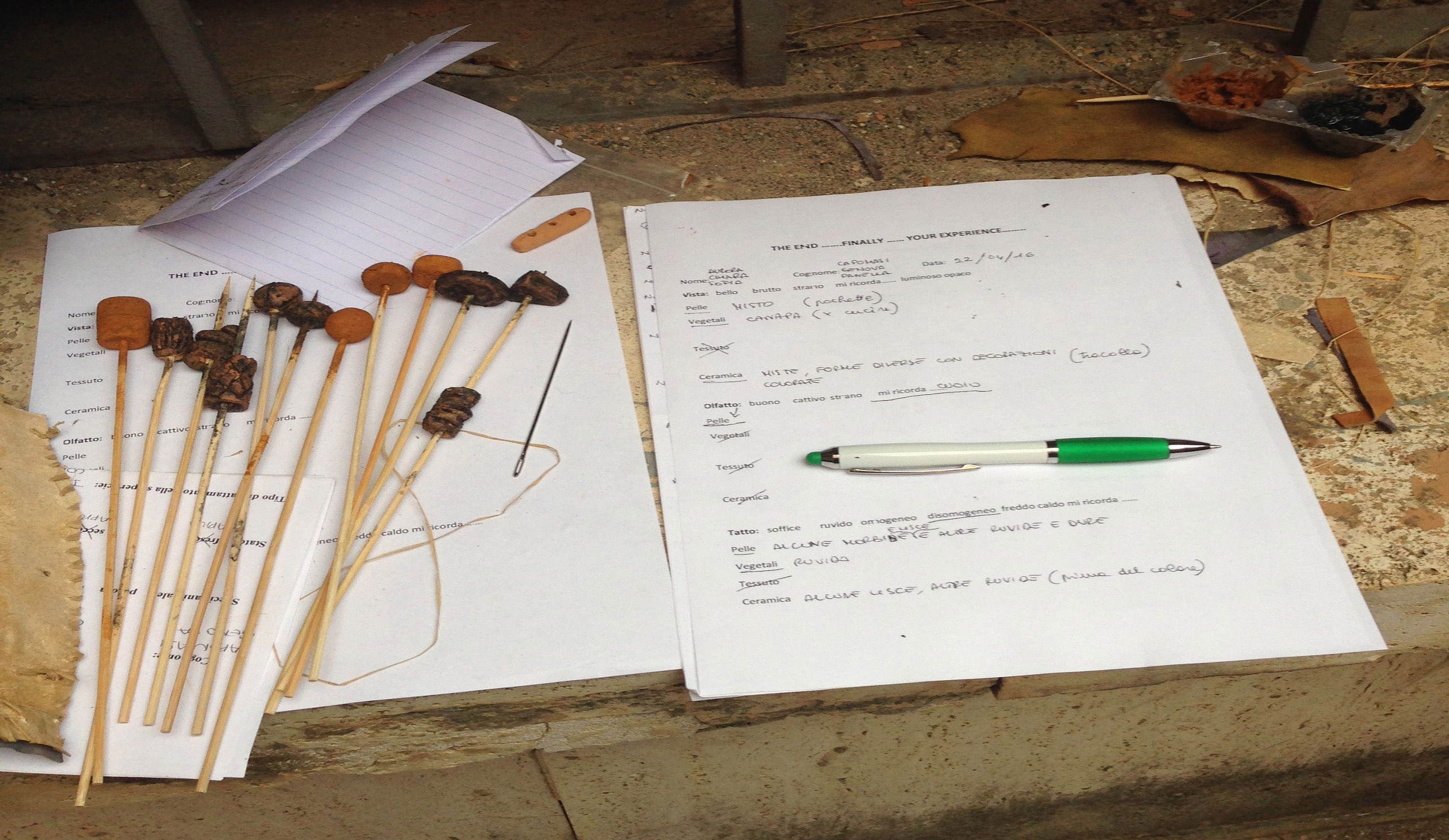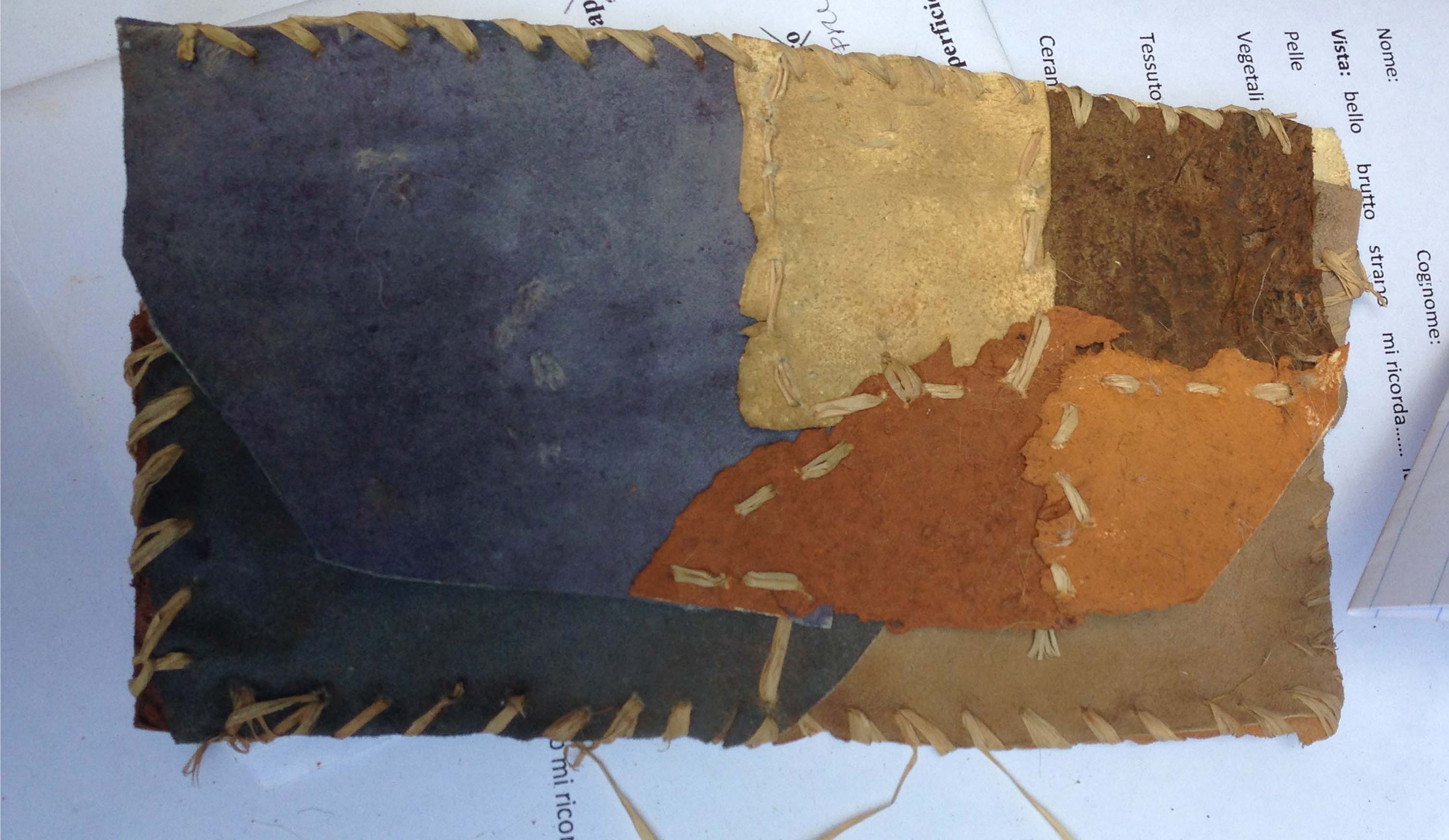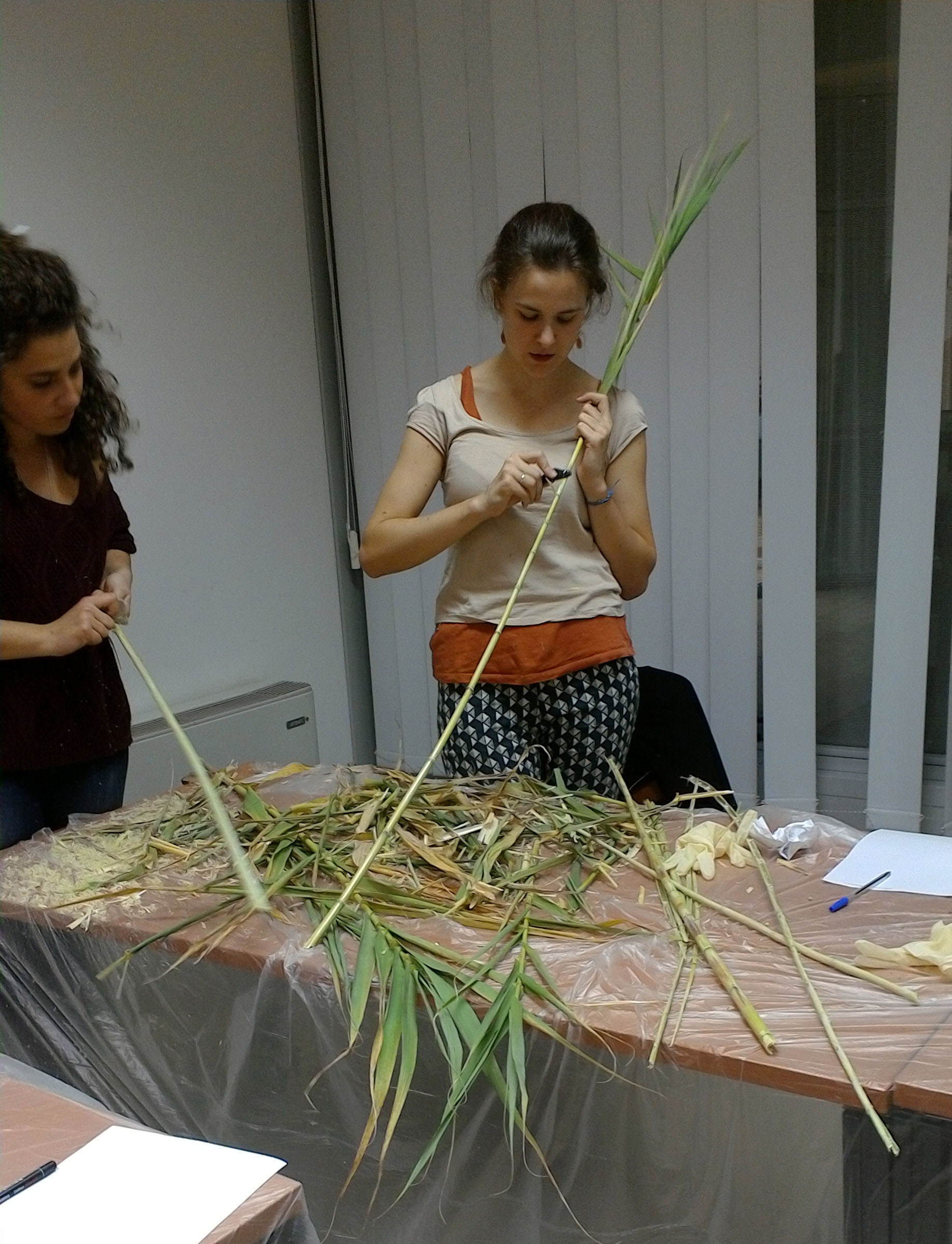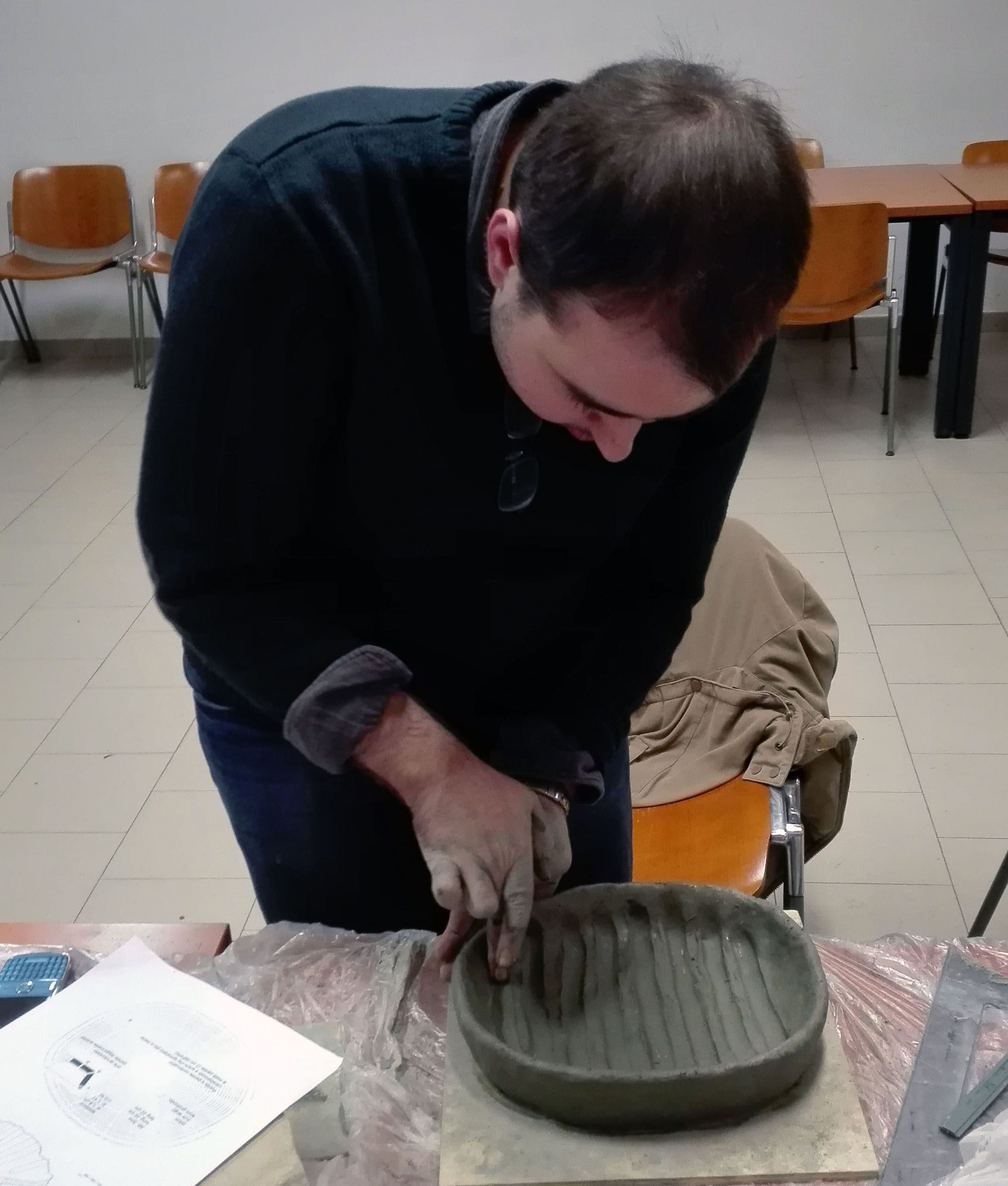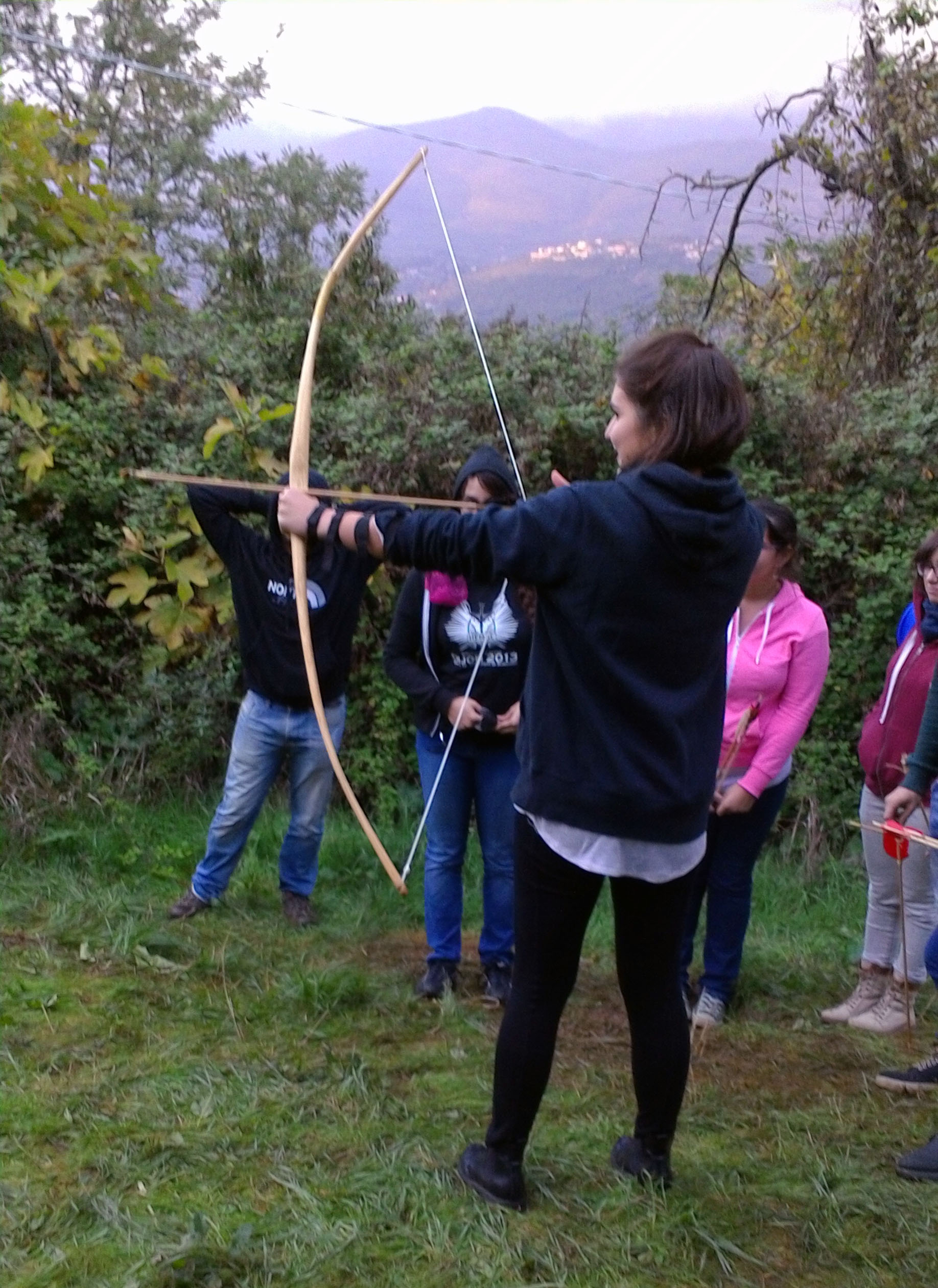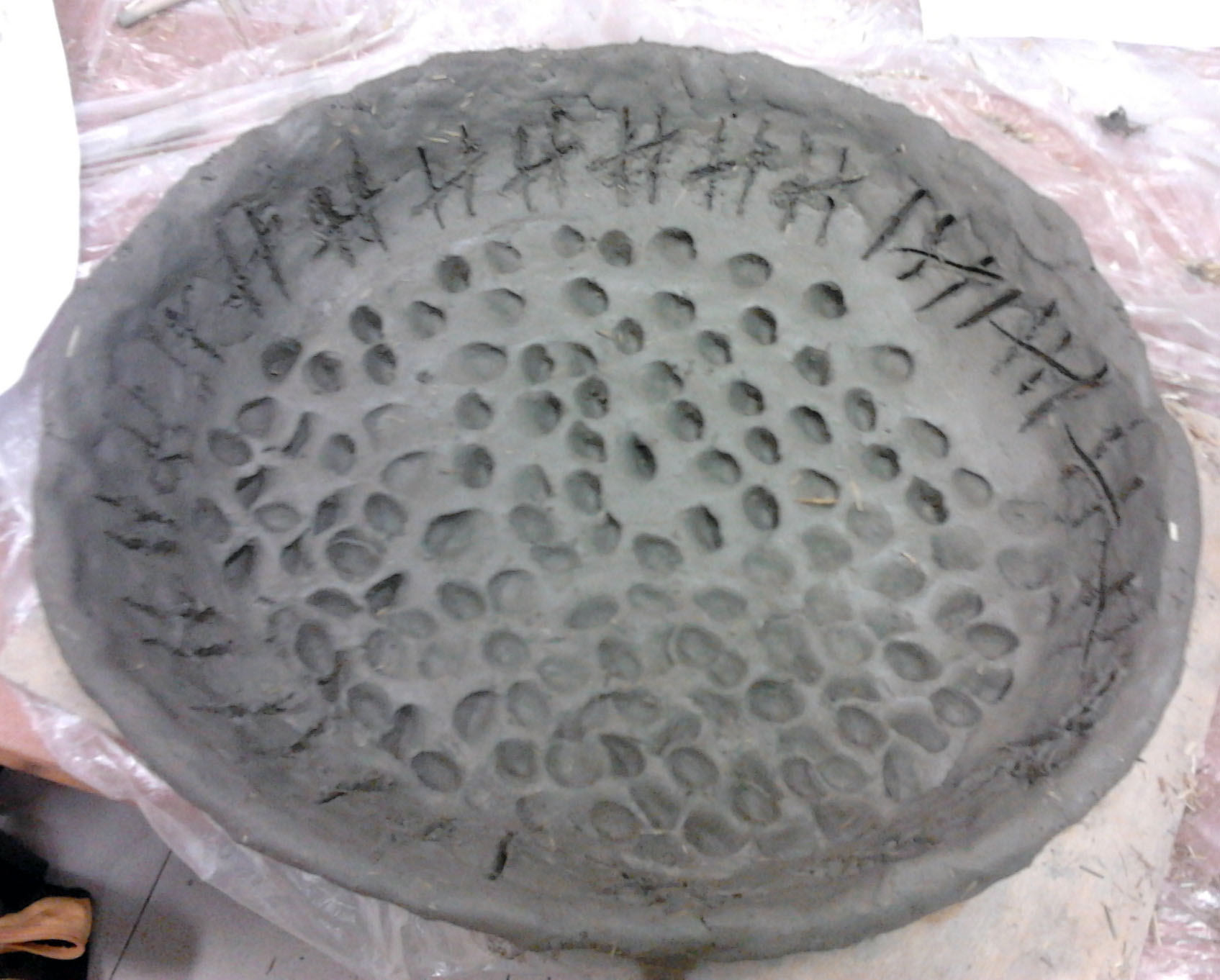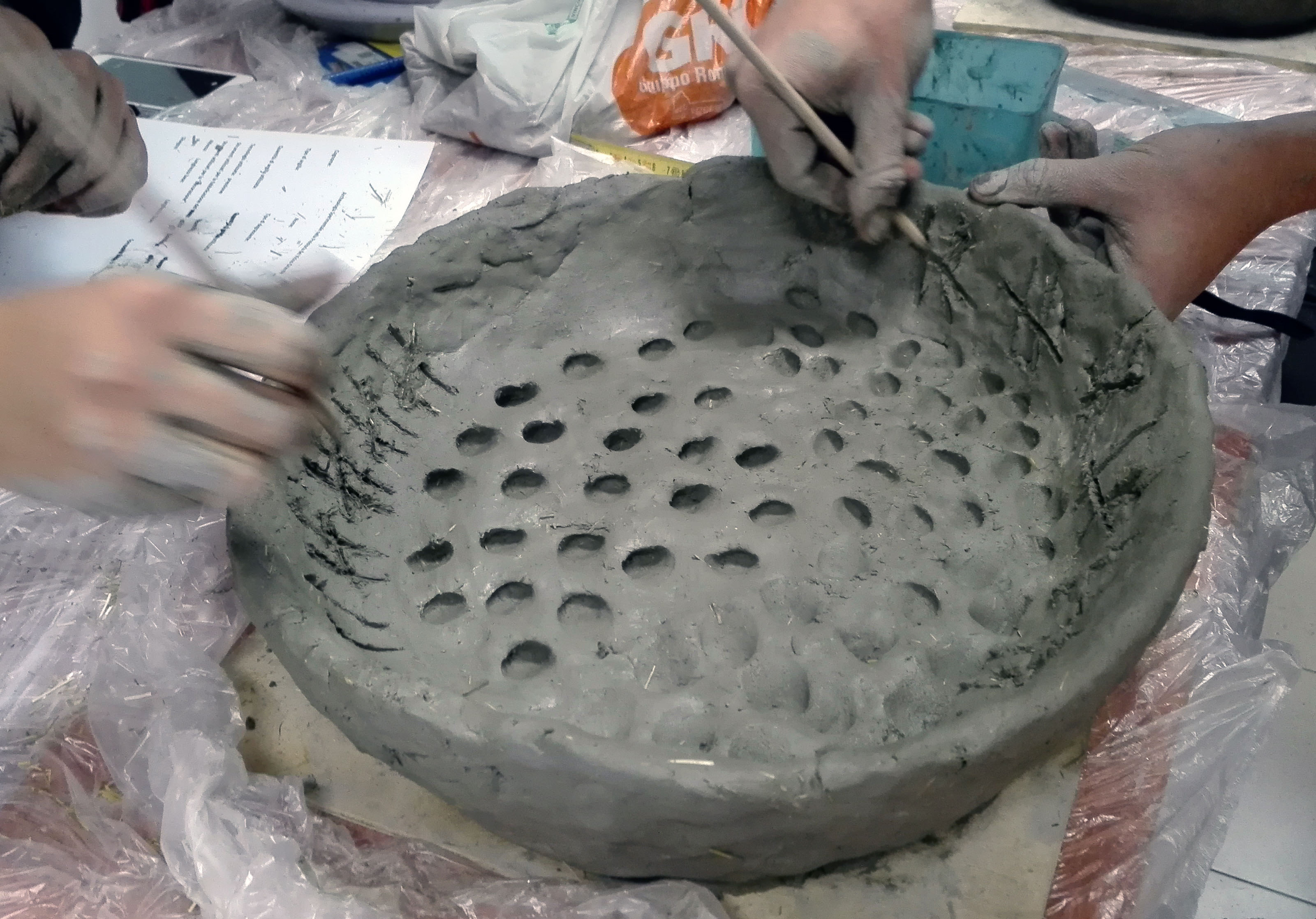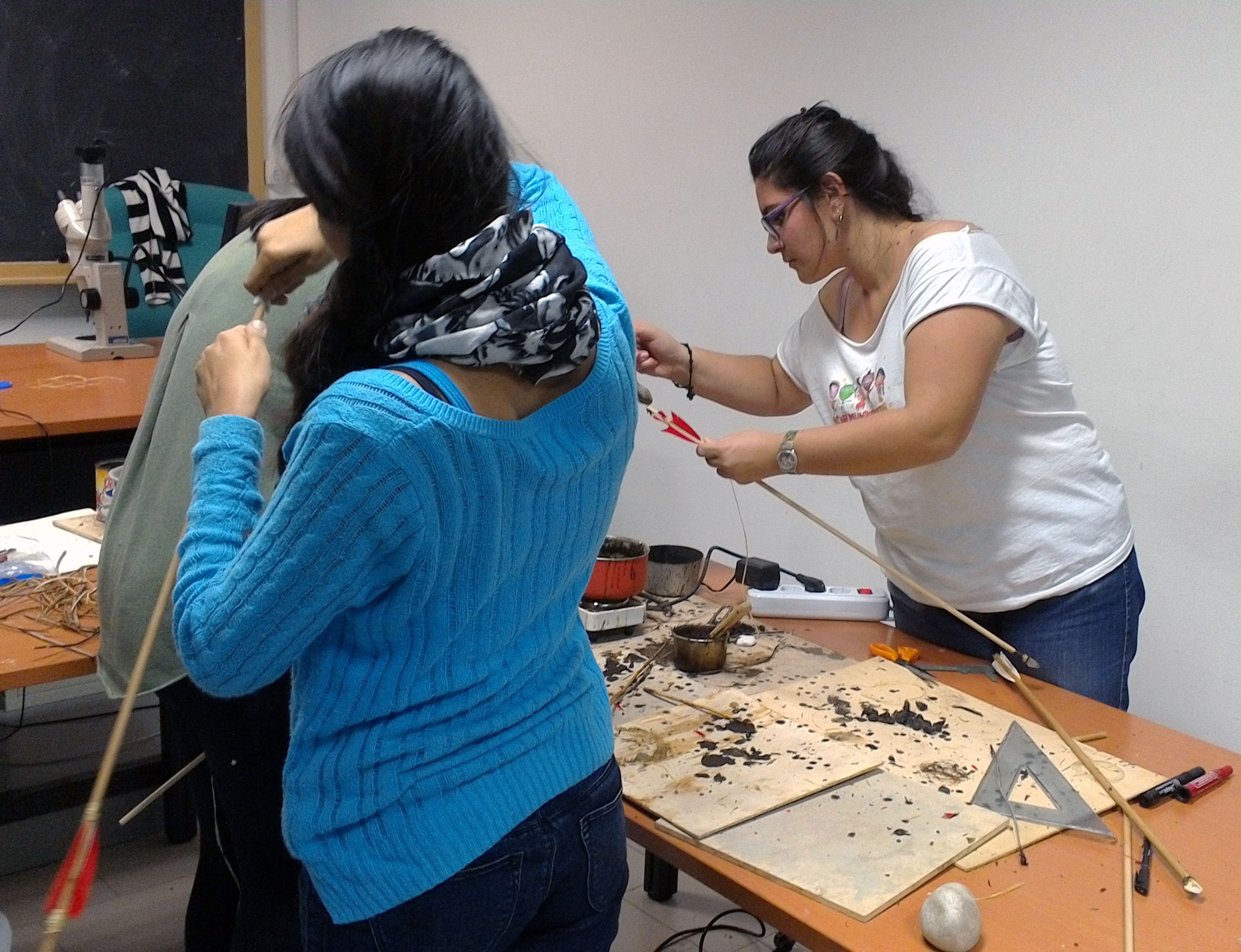Experimental activities play an important role in both teaching and research programs carried out in the laboratory. Experimental frameworks related to archaeological questions are organized and done during BA and MA courses of Experimental Archaeology taught by C.Lemorini. Moreover, other experimental sessions are done systematically in the laboratory in order to test hypotheses generated by traces analysis of specific archaeological contexts. The experiments are organized and directed by scholars and PhD candidates with the assistance of MA and BA students of “Sapienza” Università di Roma.Quite often, experimental protocols are organized and carried out in collaboration with experienced artisans that give key input for the proper construction of the experiments. For basketry activities and dying activities we collaborate with Giovanni Morra, Parco Naturale dei Monti Aurunci, Campotosto (LT) and for weaving and textile experiments we collaborate with Assunta Perilli, “La Fonte della Tessitura”, Campotosto (AQ).The experimental sessions organized with students allow them to experience gestures, activities, tools that are not part of their cultural background. Moreover, they take part in the realization of frameworks that are intended to verify hypotheses related to technological and functional questions. Therefore, they learn how to record what they are doing and how to express their impressions on the experiments carried out.
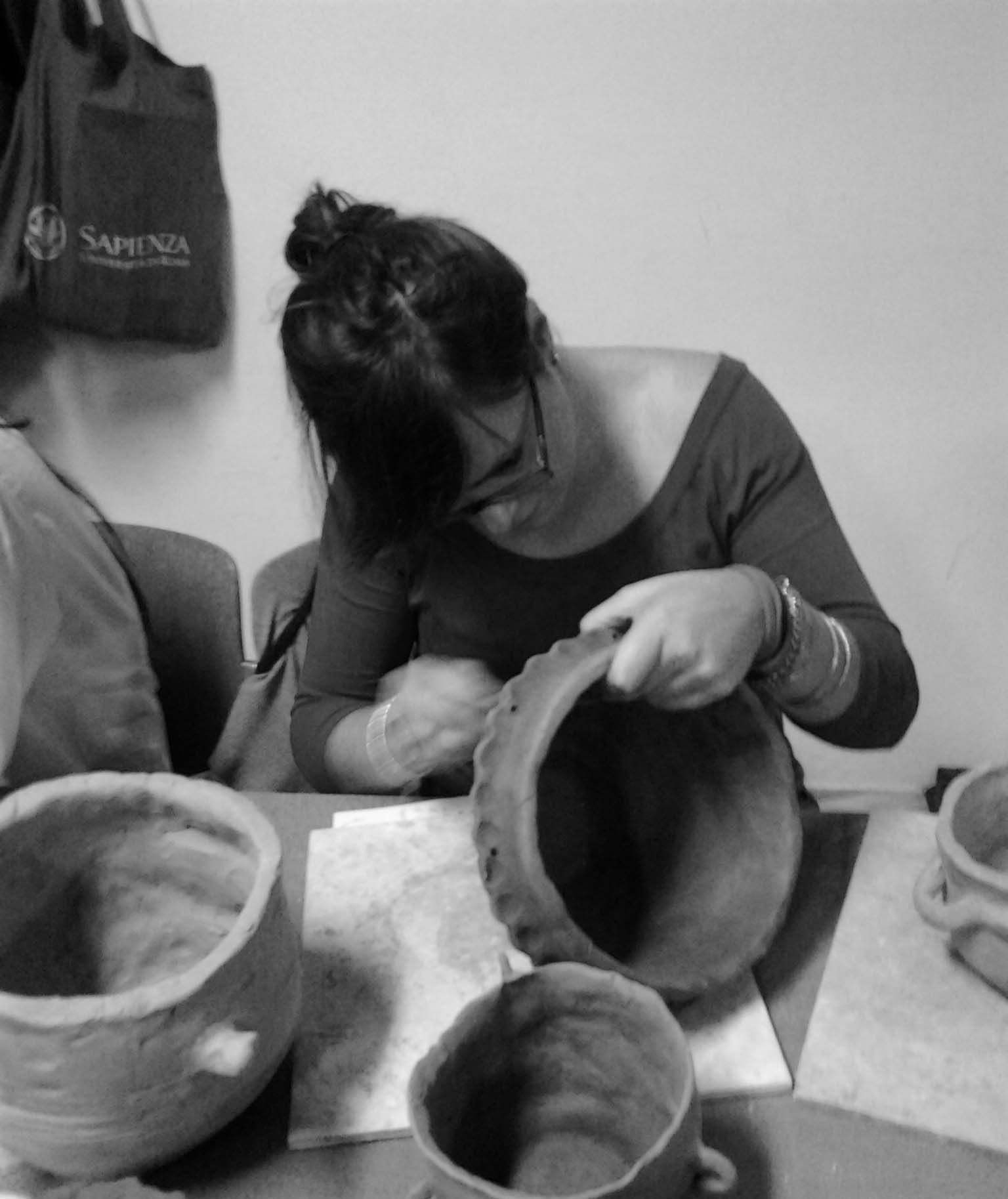
Guest Researchers
Alice Vinet
Alice Vinet started her PhD in 2015 at the Paris 1 – Panthéon Sorbonne University in Paris. Her research focuses on the key issues of the Early Chalcolithic societies from Central Anatolia. Around 6000 BC, which correspond to the end of the Neolithic and the beginning of the Chalcolithic, important socio-economic changes took place in numerous of communities of Central Anatolia. While facing a population increase and new regional relationships, resulting from a millennium of sedentarism in western Anatolia, the villagers settled in new territories on the Anatolian plateau. Her project aims to study the cultural and economic interactions between two essential areas of the Anatolian Plateau: the Konya plain and Cappadocia. To document these interactions, she chose two contemporary sites: Çatalhöyük and Tepeçik Çiftlik. She is focusing on the obsidian industry, through a techno-functional approach. By comparing two lithic collections, she is addressing the socio-economic and cultural similarities and differences at a supra-regional scale.
https://www.researchgate.net/profile/Alice_Vinet
https://univ-paris1.academia.edu/AVinet
http://www.trajectoires.cnrs.fr/spip.php?article147
http://www.cepam.cnrs.fr/spip.php?article2444
Email
ltfapa@uniroma1.it
Address
Museo delle Origini
Università Sapienza di Roma
Piazzale Aldo Moro,5
00136
Italy
Phone
(0039)0649913924





